A smoothly functioning drawer is something we often take for granted—until it starts to fail. Whether in your kitchen cabinet, office filing cabinet, or bedroom furniture, a problematic drawer can be a source of daily frustration, disrupting workflow and organization. The drawer slide, the unsung hero behind every easy glide and soft close, is typically the component at the heart of the issue.
For businesses in the furniture, cabinetry, and office supply sectors, understanding these common failures is crucial. It not only helps in providing better customer support but also underscores the importance of using high quality components like ball bearing drawer slides from the outset. This guide will walk you through the five most common drawer slide problems and provide practical, step by step solutions to fix them.
1. The Drawer is Sticking or Hard to Open/Close
This is perhaps the most frequent complaint. You pull on the handle, and the drawer refuses to budge or moves with a jarring, sticky resistance.
Causes:
Over time, the drawer slide can become bent or the mounting screws can loosen, causing the cabinet drawer slide to fall out of its proper alignment, leading to operational issues. Furthermore, in environments like kitchens or workshops, grease, dust, and small particles can infiltrate the slide mechanism, gumming up the works through dirt and debris buildup. Additionally, exceeding the weight capacity of the slide by overloading it can cause the mechanism to warp or bind.
How to Fix It:
1. Empty and Inspect: First, completely empty the drawer. This reduces weight and allows for safe handling.
2. Check for Obstructions: Visually inspect the slide tracks inside the cabinet and on the drawer itself. Look for any obvious debris, bent metal, or foreign objects.
3. Test and Realign: Slowly open and close the drawer while observing its movement. If it sticks in one particular spot, it’s likely a debris issue. If the resistance is consistent, it’s probably misalignment.
- For Debris: Use a vacuum with a brush attachment to remove loose dirt. Then, wipe down the tracks with a damp cloth. For greasy buildup, a mild degreaser or isopropyl alcohol can be effective. Once clean, apply a dry lubricant like Teflon spray or graphite powder. Avoid oilbased lubricants like WD40, as they attract more dust and dirt over time.
- For Misalignment: Loosen the mounting screws on both the cabinet and the drawer just enough so you can shift the slide. Do not remove them completely. Gently tap the slides into their correct position. The drawer should sit evenly within the opening. Once aligned, firmly retighten all screws.
Prevention Tip: Specify and use ball bearing drawer slides for your products. Their enclosed design offers better protection against debris compared to simpler slide types. Furthermore, ensure you communicate the drawer’s weight capacity clearly to the enduser.
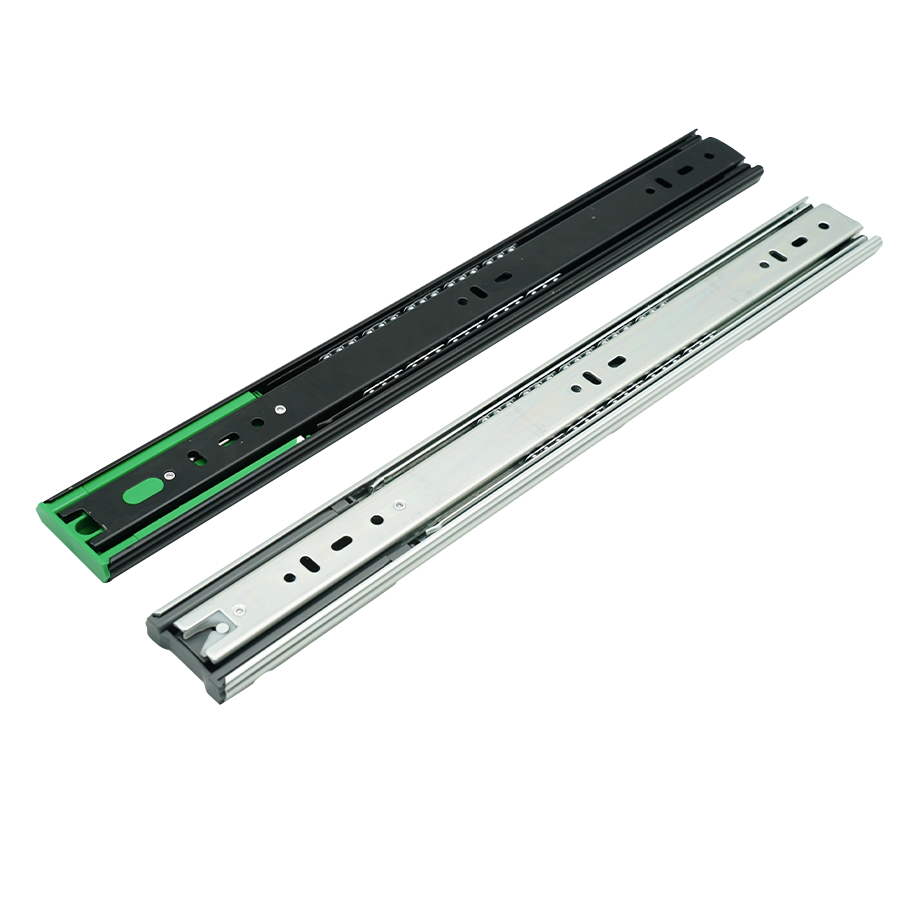
2. The Drawer is Sagging or Drooping
You notice the drawer front is no longer flush with the cabinet face, or one side of the drawer is visibly lower than the other.
Causes:
Weak or damaged slides, particularly those of low-quality construction, lack the structural integrity to support heavy loads over time, which leads directly to sagging. This problem can also stem from an improper installation, where if the slides were not level during the initial setup, the drawer will inevitably sag. Another common cause is failed mounting points, where the screws may have pulled out of the particleboard or wood, a situation that is especially likely if the wrong type of screw was used.
How to Fix It:
1. Empty the Drawer: As always, start with an empty drawer.
2. Assess the Mounting: Check if the slides are still securely fastened to both the drawer and the cabinet. Look for any stripped screw holes.
3. Reinforce and Relevel :
If the screws are loose but the wood is intact, simply tightening them may solve the problem.
If the screw holes are stripped, you will need to reinforce them. Remove the slide and fill the old holes with wood glue and toothpicks or a specialized wood filler. Once dry, you can drill new pilot holes and reattach the slide.
For a more permanent fix, remount the slide in a slightly different position where the wood is solid.
4. Check for Level: Use a spirit level on the drawer slide inside the cabinet to ensure it is perfectly horizontal. Adjust as necessary.
Prevention Tip: Invest in heavyduty ball bearing drawer slides with a high weight rating. Their robust construction and multiple bearing points distribute weight evenly, preventing sagging. For cabinet boxes made of particleboard, using machine screws with nuts and washers can provide a much stronger hold than wood screws.
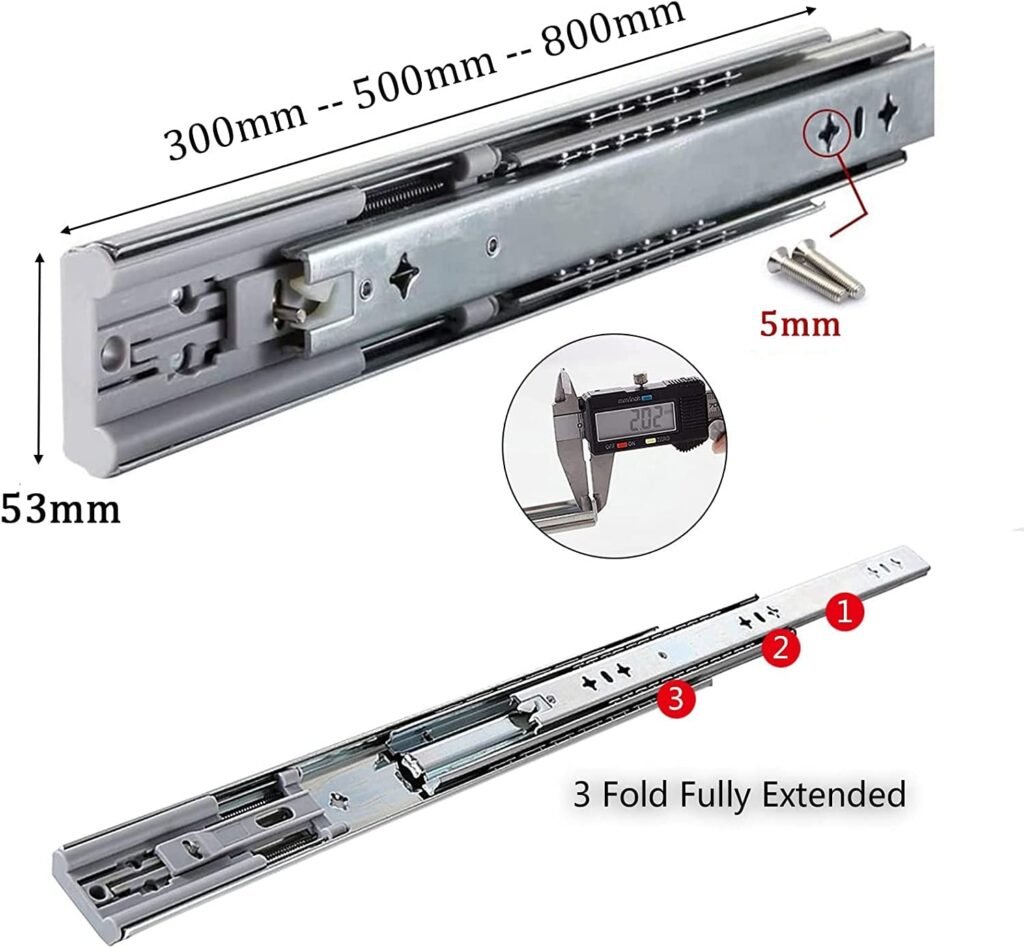
3. The Drawer Slides In and Out Unevenly
The drawer feels wobbly and doesn’t glide on a smooth, single plane. It may scrape against the sides of the cabinet.
Causes:
The functionality of a drawer can be compromised by worn-out rollers or bearings, where in cheaper roller slides the plastic wheels can wear down, and in ball bearing drawer slides, the bearings themselves can wear out or the raceway can become damaged. Another frequent issue is loose mounting screws; if the screws on one side are looser than the other, that side will have more play, causing an uneven and problematic glide. Finally, the problem may not be with the slide at all but with a damaged drawer box, where the drawer itself may be coming apart at the joints and losing its square shape.
How to Fix It:
1. Inspect the Slides: Remove the drawer according to the manufacturer’s instructions (usually by pulling it out to its full length and then depressing a plastic lever or clip on the slide).
2. Examine the Mechanism: Look at the exposed ball bearing drawer slide. Check if the bearings are visibly damaged or missing. Manually move the slide mechanism—it should extend and retract smoothly. Any grinding or catching indicates internal damage.
3. Tighten and Align: Tighten every single screw on both the drawer and cabinetmounted sections of the slide. Ensure both left and right slides are mounted at the exact same height and depth.
4. Replace if Necessary: If the slide mechanism itself is damaged or worn out, replacement is the only viable option. This is why it’s wise to keep spare slides for your furniture lines.
Prevention Tip: The superior load distribution and smooth operation of a quality ball bearing drawer slide make it far less prone to the wear and tear that causes uneven movement. Their precision engineering ensures consistent performance on both sides of the drawer.
4. The Drawer Won’t Stay Shut
The drawer doesn’t fully latch or it slowly creeps open on its own, which can be a safety hazard.
Causes:
A common issue preventing a drawer from staying closed is a faulty self-closing mechanism, as many modern slides feature a soft-close or self-closing damper that, if it fails, or a spring-loaded latch that breaks, will cause the drawer not to stay shut. Another potential cause is misalignment, where if the drawer is misaligned, the latch may not engage properly with the strike plate on the cabinet. Finally, the problem could be directly with the strike plate itself, as this small metal or plastic piece that the latch catches onto may be loose or out of position.
How to Fix It:
1. Identify the Latch Type: Determine if your slide has a softclose damper or a simple mechanical latch.
2. Inspect the Strike Plate: Ensure the strike plate is tightly secured and correctly positioned. Adjust it if it’s adjustable.
3. Check the Drawer Alignment: A misaligned drawer will prevent the latch from engaging. Follow the realignment steps from Problem 1.
4. Test the SelfClosing Mechanism: If the drawer closes smoothly but doesn’t latch, the issue is likely with the latch or damper. These components are often replaceable. Contact the slide manufacturer or your supplier for a replacement damper cartridge or latch kit.
Prevention Tip: Source your ball bearing drawer slides from reputable manufacturers who offer reliable softclose mechanisms and good availability for spare parts.
GET IN TOUCH
Get a good price
5. The Drawer is Noisy (Squeaking, Grinding)
A quiet office or a peaceful kitchen can be disrupted by a noisy, squeaking drawer.
Causes:
Noisy drawer operation can stem from a lack of lubrication, where metal-on-metal contact, especially in older or lower-quality slides, will create friction and noise. Another frequent cause is contaminated bearings, where dirt and grit inside a ball bearing drawer slide will cause a grinding noise as the bearings can no longer roll smoothly. Finally, loose components can be the culprit, as a loose screw or a slightly detached drawer bottom can vibrate during use and cause a distinct rattling sound.
How to Fix It:
1. Clean and Lubricate: This is the first and most effective step. Remove the drawer and thoroughly clean the slides as described in Problem 1. After cleaning, apply a dry lubricant specifically designed for drawer slides. Spray it lightly along the ball bearing raceway. Dry lubricants won’t attract dust and are clean to the touch.
2. Tighten Everything: Go over the entire drawer assembly. Tighten all screws on the slides, the drawer handles, and the drawer bottom.
3. Check for Wear: If cleaning and lubricating don’t resolve a grinding noise, the internal bearings are likely damaged and the slide assembly needs to be replaced.
Prevention Tip: Highquality ball bearing drawer slides are often prelubricated and designed for quiet operation throughout their lifespan. Their sealed design is your best defense against noisecausing contamination.
Conclusion: The Value of Quality from the Start
While the fixes above can resolve most common issues, the most effective solution is often preventive. Specifying and installing highquality ball bearing drawer slides in your furniture, cabinetry, and office products is an investment in customer satisfaction and product longevity.
The precision engineering, superior load capacity, and durable construction of a reliable ball bearing drawer slide mitigate the vast majority of these common problems before they even occur. They ensure a smooth, quiet, and dependable operation that endusers will appreciate for years to come, reducing warranty claims and building trust in your brand.
For businesses, stocking compatible replacement slides and providing clear installation guides can also enhance your value proposition. By understanding these common problems and their solutions, you position yourself not just as a seller, but as a knowledgeable expert in functional and durable storage solutions.


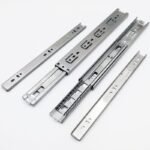
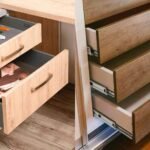
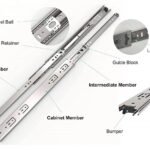
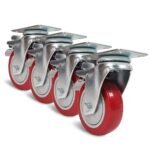
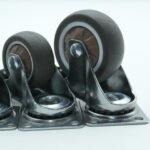
Leave a Reply